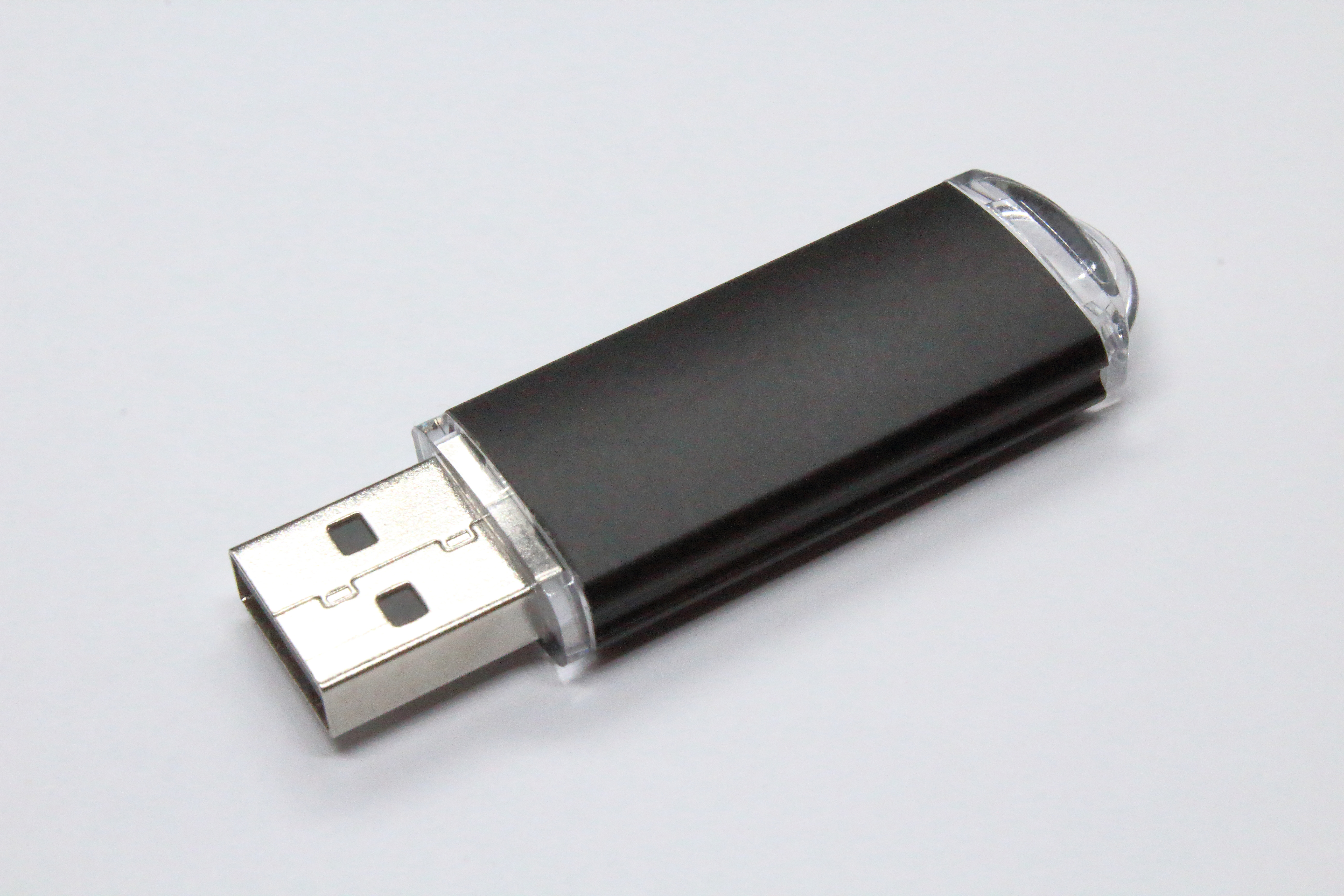USB Drives

Perhaps the most recognizable USB device, the flash drive is a storage device for data. It uses flash memory and the USB protocol to bus information between the storage device and a computer. USB drives can be and are used for everything from personal files and photos to confidential data from government and medical sources. The first flash drive was created by M-Systems and original storage capacities ranged between 8-32MB, a far cry from today’s typical 64GB monsters. 1TB drives are slowly becoming available to consumers. If you want to learn more about the creation of flash drives, check out our blog.
Drives usually come in the form of a small, hand held rectangular plastic case which houses the memory chip. The connector is found at one end. The casing can come in many shapes and sizes but typically is stick like. Custom drives are increasingly popular with businesses looking to promote their brand. Other names include memory stick, thumb drive, jump drive, disk key, gig stick, and pen drive.
Current USB 3.0 flash drives can transfer up to 5Gbit/s, a good ten times after than previous USB 2.0 versions. The USB-C connector can achieve data rates of 10 and 20 Gbit/s. Flash drives provide what is called “cold storage” because they do not require the Internet to function. Cloud technology is an example of “hot” storage; it’s considered hot because it is susceptible to security breaches, which is why cold storage options are considered valuable. You can simply switch your internet connection off and insert your drive to significantly reduce your risk of security breaches via the internet.
To learn more about what’s inside a USB drive, read our handy blog on the subject.
If you have more questions about flash drives, check out our Knowledgebase.
